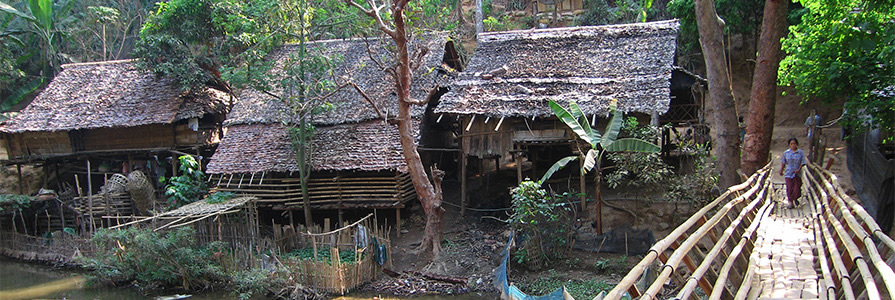
Mae Ra Ma Luang
Location
Sob Moei District, Mae Hong Son Province
Distance from Border
4 km in a straight line, 6 km down the Yuam River.
Distance from Mae Sariang
Mae Sam Laep, 90 kms / 4 hours driving time in normal conditions
Accessiblility
Car: All-year-round access; 4WD + chains required in the rainy season.
Boat: Access from Mae Saam Laep downstream approx. 1½ hrs (or Mae Ngao with 5 hr walk).
Phone: No mobile phone coverage. However, phone coverage is available in a nearby village approx. 30 mins away.
Note: Due to its isolated location, arrangements can be made for visitors to sleep overnight in the camp.
Camp Geography
Area 1,600 rai (256 ha)
Introduction and History

Mae Ra Ma Luang is also known as Mae Ra Moe or Mae Ra Mu in the Karen/Kayin language. The camp population of some 9,100 people is 99 percent ethnic Karen/Kayin.
Almost half the residents come from Karen/Kayin State, while more than 40 percent come from the Bago Region in Burma/Myanmar. Some 8 percent come from Mon State.
The camp dates back to February 1995, when it was set up after the fall of Manerplaw, the former headquarters of the Karen National Union (KNU).
Manerplaw was also a temporary home to many of the groups that fled crackdowns following pro-democracy demonstrations throughout Burma/Myanmar in 1988.
The initial population of the camp in 1995 was about 4,500 people. Three years later, during the period of the consolidation of camps along the Salween River to the north, there was a further influx of 2-3,000 refugees.
At that time, the camp was extended southwards to the point where two rivers meet—the Mae Ra Ma Luang River and the larger Yuam River. The new part of the camp, called Section 7, straddles the provincial boundary between Mae Hong Son and Tak provinces.
Due to its isolation, the camp is off the mains electricity grid. The camp office and health, education and social centres in the camp have access to power from electric generators. Hydro-electricity is widely generated, mainly to recharge vehicle batteries to power household lighting.


